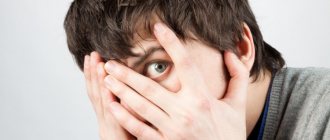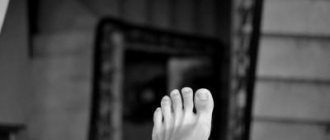“... we will quietly replace their values with false ones and force them to believe in these false values. How? We will find our like-minded people, our assistants and allies in Russia itself. Episode after episode, the grandiose tragedy of the death of the most rebellious people on earth, the final, irreversible extinction of their self-awareness, will play out. From literature and art, for example, we will gradually erase their social essence... Literature, theaters, cinema - everything will depict and glorify the basest human feelings. We will in every possible way support and raise the so-called creators who will plant and hammer into human consciousness the cult of sex, violence, sadism, betrayal - in a word, all immorality. ...Rudeness and arrogance, lies and deceit, drunkenness and drug addiction, animal fear of each other and shamelessness, betrayal, nationalism and enmity of peoples, above all enmity and hatred of the Russian people: we will deftly and quietly cultivate all this. And only a few, very few will guess or understand what is happening. But we will put such people in a helpless position, turning them into a laughing stock. We will find a way to slander them and declare them the scum of society” (American General Allen Dulles, head of US political intelligence in Europe, who later became director of the CIA).
". Russians should be reduced to 15 million people servicing wells and mines. " (Margaret Thatcher)
It’s not a pity to be crucified in order to return to Pilate. A poet cannot be taken with either prison or bag. Short life. Seven circles of restless harmony The poets are walking. And they leave us on the eighth. (A. Bashlachev)
What does it represent?
There are people who cannot imagine life without pets; they love nature and absolutely all the creatures that live on our planet. And there are those who, just thinking about, for example, the possibility of meeting a tiger, and in a zoo, are horrified.
It may be that a person is afraid of cockroaches, but at the same time feels completely calm in the company of wild animals. Naturally, if they are in cages.
Zoophobia affects a large part of the population, mainly women and children. It includes completely different species and classes of fauna representatives.
Types of zoophobia
The most common irrational fear is: Wild animals – Agrizoophobia; Cats – Ailurophobia, Galeophobia; Ticks – Acarophobia; Hens, chicks – Alektorophobia; Bees, wasps and hornets – Apiphobia; Spiders – Arachnophobia; Frogs, lizards and other amphibians – Batrachophobia; Sharks – Galeophobia; Reptiles, particularly snakes – Herpetophobia; Krotov – Zemmiphobia; Muravyov - Insectophobia; Pisces – Ichthyophobia; Dogs – Cynophobia; Otter – Lutraphobia; Moly – Mottephobia; Mice and rats – Musophobia; Birds – Ornithophobia; Shellfish – Ostraconophobia; Insect parasites – Parasitophobia; Lice – Pediculophobia; Bykov - Taurophobia; Bats – Chiroptophobia; Horses – Hippophobia;
Causes of phobia
There are a variety of causes for agrizoophobia. Among the common ones are:
- deep psychological shock;
- heritage of ancient times;
- heredity;
- childhood phobias;
- movies and TV shows.
As practice shows, fear of wild animals often develops after a terrible incident that is associated with the activity of a wild animal. This case may concern both the patient with agrizoophobia and people close to him. Quite often it happens that a person simply heard some shocking news, and it cannot get out of his head.
The sight of a wild animal frightens a zoophobe
Experts say that a phobia can arise as a result of an exaggerated innate instinct.
Almost every child in childhood is afraid of dogs, spiders, rats and other animals. After a few years, this fear usually disappears. The person understands the groundlessness of his phobia. He is not afraid of animals, but behaves very carefully around them. Psychologists have been able to prove that agrizoophobia tends to be inherited. If one of the parents has a similar problem, then there is a possibility that the fear of animals will easily pass on to their child.
If a parent regularly tells a child something frightening about predatory animals, then, naturally, he may develop a strong fear, which in the future will turn into a phobia. Even the famous lullaby, which talks about a top that can bite a child on the side, can cause serious fear. Fear of wolves in such people is observed in 60 percent of cases.
Violent documentaries have a detrimental effect on the human psyche. Modern technologies can capture some moments in the wild quite realistically, making hunting scenes shocking. Such films usually have a lot of bloody shots that cause panic fear of wild animals.
Fear of animals
Symptoms
Somatic
• Increased blood pressure, which can cause a headache; • Increased sweating, phobe makes you feel hot no matter what the temperature is indoors or outdoors. That is, even in cold weather his clothes will get wet in an instant; • Pain in the heart area that resembles a heart attack, tachycardia. This, naturally, frightens even more, causing other symptoms of panic to only intensify, because it seems to the person that he is about to die without waiting for help; • Feeling of suffocation. With frequent shallow breaths, dizziness appears, and the level of oxygen in the blood literally goes off scale. This causes the opposite effect – asphyxia, lack of air. There are no problems with the pharynx and lungs, you just need to try to calm down by taking deep, slow breaths in and out. Preferably in a paper bag or palms. In extreme cases, loss of consciousness threatens; • Stomach pain, nausea, vomiting and diarrhea - mainly concern individuals who have a history of problems with the gastrointestinal tract. At the slightest excitement their stomach begins to “twist”; • Tremor of the limbs, unsteady gait, voice trembles and becomes high-pitched, thin. Sometimes there is stuttering and slurred speech; • Frequent urge to go to the toilet. The brain evaluates anxiety as an urgent need to escape. And salvation usually consists of running away from an object that poses a threat. In this case, from any animals. So, in order to hide from sight for sure, the body gets rid of excess fluid, so to speak, dumps ballast. That’s why vomiting, the desire to pee, and so on arise; • The skin on the face and neck turns red, although sometimes, on the contrary, the phobe instantly turns pale from fright and faints.
Behavioral and cognitive
• Derealization is a disturbance of perception in which a person seems to be asleep or in some unreal world. And in general, at the moment of panic, the passage of time can slow down, or, on the contrary, speed up so much that he will then not remember parts of the events that happened; • Hysteria, loud crying; • The phobe, experiencing horror, loses control over his behavior. The main task is to calm down and feel safe, but how is not entirely clear. The so-called tunnel consciousness makes itself felt. The ability to carry out mental operations is quite limited. He is not able to rationalize his decisions, so later, having calmed down, he experiences guilt and shame. • Obsessive thoughts that you can’t get rid of. A person can be in the house, in bed, safe, but still think about dangerous predators that they are afraid of. And no logical arguments will help him calm down. • A zoophobe does not visit zoos or places where there are animals that terrify him. Sometimes this can lead to the fact that he simply does not leave the house. Let's say this happens with cynophobia - the fear of dogs that are found on the street, live in almost every house, guard gas stations, bases, and so on.
Agrisoophobia is a general term used to describe the fear of wild animals.
Many people suffer from agrizoophobia, especially those who were born and raised in urban areas and began to have an idea of wild nature from various films, programs and documentaries.
Agrizoophobia is the most common of the phobias. This problem often significantly affects the patient's quality of life. It can cause panic attacks and seriously affect a person's communication skills.
Those suffering from agrizoophobia avoid zoos and cannot watch wild animals even on TV.
Agrizoophobia is very rare in North America, but is more common in Africa.
Those suffering from agrizoophobia tend to feel comfortable in cities or in civilized areas. This type of phobia is based on a person's instinct and thoughts.
Many agrizoophobia sufferers choose not to keep pets that resemble their wild animals, and to them, they differ only in size.
Agrisophobia is an intense fear of something that poses no real danger. Although sufferers of Agrizoophobia understand that this fear is irrational, they often cannot cope with it.
Agrizoophobia is mostly undiagnosed and remains hidden. It is always associated with attacks, killings and violence by wild animals. It develops in the subconscious, as a defense mechanism.
Attaching an emotion to a situation is one of the main ways of learning. Sometimes we just get the wrong kind of connection. As long as negative associations are powerful enough, the subconscious, in such situations, gives an alarm and wants to protect us from various troubles.
One of the reasons for the development of agrizoophobia may be associated with a traumatic event that occurred in the past. This event can happen both to the person himself and to someone in his environment. This may be a seen consequence of an event through which a person really realized the danger of meeting wild animals. Remember: emotions are also very contagious.
Sometimes even innocent stories can become a potential cause for the development of this phobia. These can be different stories related to wild animals or various diseases associated with them, told by parents, teachers or other adults from the child’s environment.
Even feature films and documentaries about the life of wild animals, based on real events, sometimes showing the killing of wild animals and containing various terrible sounds and screams, can work as a trigger for agrizoophobia.
Sometimes simply repeated warnings about the potential dangers of wild animals is enough to develop this phobia.
It also has a hereditary tendency or can be modeled.
Symptoms of agrizoophobia are the same as other phobias - shortness of breath, excessive sweating, nausea, dry mouth, rapid breathing, arrhythmia, convulsions, inability to speak and think clearly, fear of dying, complete loss of control, feeling disconnected from reality, anxiety attack.
This phobia occurs and works on a subconscious level: as a defense mechanism, therefore, methods of treating it should be aimed at neutralizing irrational thoughts. Psychological help, in this case, is probably the most effective way. In this case, a professional psychologist and counselor will help ease the fear through discussion and reasoning. An effective method of psychotherapy is cognitive therapy. This therapy involves making changes in behavior through ongoing practice or using exposure therapy or desensitization techniques. In exposure therapy, a person is indirectly exposed to wild animals and gradually learns to control the situation. In the end, the impact can be direct (again in a controlled situation, of course!).
Hypnotherapy aims to reprogram the subconscious. This type of therapy is considered the most effective and fastest method. However, in this case you should only turn to serious professionals.
Neuro-linguistic programming (NLP) is based primarily on the study and practice of how we create our reality. According to NLP, a phobia is the result of our programs or “constructs” that we have created ourselves and which do not work well. With the help of NLP, these constructs are identified and “reprogrammed” so that the phobia is reduced to a minimum.
Finally, I would like to point out that just as a phobia takes years to develop, treatment can also take a long time. This time is required to finally resolve the problem and have the desired positive result. Either way, the fact is that this phobia can be completely treated. All that is required for this is a strong desire of the patient and professional help. Remember: only a huge and sincere desire makes the way even in impassable places.
Negative consequences
• Traumatization. During a panic attack, some zoophobes freeze, others, as already mentioned, cry loudly and call for help, while others rush to flight, completely unaware of the obstacles in front of them. And this puts both health and life at risk. For example, you can get hit by a car, crash into a door, fall out of a window, and so on. • Insomnia. Zoophobes often have scary dreams involving animals that they are terribly afraid of. Why are biological rhythms disrupted, which is fraught with the occurrence of chronic diseases, sometimes incurable, causing a lot of trouble and pain. • Depression. Tension and constant anxiety exhaust the nervous system, fears and shame about behavior cause a persistent desire to distance oneself from others. Isolation, self-flagellation, plus unpleasant experiences and panic attacks lead to a feeling of total loneliness. Hence the apathy and suicidal tendencies. • Loss of feeling satisfied with life. In order to maintain peace of mind, the phobe has to refuse pleasures that other people can afford. I mean, travel, trips out of town, picnics, visits to restaurants, circuses, parks, and so on are literally prohibited for him. • Narrowing of social connections. And subsequently the inability to realize oneself in a profession, family, or friendships.
Causes
The instinct of self-preservation
Subconsciously, people are afraid of animals because they often pose a threat to life and health.
But phobias are an irrational fear; a person is afraid even of those creatures that are not able to cause harm to him.
The reason for this behavior lies in the genetic code, that is, in the information that we inherited from our ancestors at the level of the self-preservation instinct.
It’s just that in some people it turns out to be overly enhanced, which provokes the emergence of a phobia.
After all, before, man was not protected from representatives of the animal world; he was hunted by tigers, bears, foxes, and snakes and poisonous insects crawled into caves at night.
And there were no hospitals, medications or antidote, so a completely harmless wound received in a fight could well cost one’s life due to an infection that got into it.
Sensitivity
The largest percentage of zoophobes are children. Their psyche is not yet able to work like a clock, that is, to withstand stress, cope with negative emotions and process the information received, appropriating it as experience.
This means that if a baby is frightened by the unexpected barking of a dog, he is at risk of becoming a cynophobe, or, having experienced the pain of a wasp sting, an apiophobe.
Sometimes it is enough just to see a fragment of a film where some representative of the fauna killed a person. And there are enough such films, as well as reports in news feeds.
And not only children are impressionable, there are also quite mature individuals, they are simply overly vulnerable and emotional. Why is every little thing perceived as a tragedy?
Negative experience
The most common cause of a phobic disorder is a personal experience of interacting with an animal, which turned out to be extremely unpleasant.
For example, a person received injuries or emotional shock, which is why the psyche had to urgently take action, attracting protective mechanisms to help.
Therefore, over time, such an episode could be forgotten, the intensity of emotions would weaken, but the fear would remain, like a scar, reminding each time that one should be careful.
And then the phobe, not quite understanding why, say, he is afraid of butterflies, will run in panic when meeting them.
Upbringing
We know that children are like sponges; they absorb behavior patterns, ways of responding to stimuli, filler words, and so on from significant adults.
So, if a mother notices a cat while walking with her child and throws stones at it to scare it away.
Or dad constantly says that you should be wary of insects, because they bite painfully, and grandma sings a lullaby at night about how a little gray top will come and bite you on the side.
Then the baby will most likely develop irrational fears and anxiety states.
Types of zoophobia
There are many types of zoophobia described: there are almost as many of them as there are animal species. Particularly common are the fears of cats (ailurophobia) and dogs (kinophobia), that is, animals that modern people most often encounter in their daily lives. As a rule, these disorders arise due to experience and psycho-emotional trauma. Fear is fixed on a subconscious level, resulting in the formation of a fear of animals of a certain species. At the same time, in a zoophobe, vegetative signs of anxiety (rapid heartbeat, sweating, tremors) may appear even when the object of his fear is mentioned. In some cases, fear and panic begin only when confronted with an animal.
Many people are afraid of spiders, that is, they suffer from arachnophobia. Quite often, clients who experience panic at the sight of snakes and lizards turn to psychologists. Objects of fear are always individual and are formed depending on the personal characteristics and experience of the person. For example, some people are only afraid of huge snakes and are completely calm about small reptiles. Others may experience a panic attack at the sight of a tiny lizard.
Zoophobia is dangerous because over time a person begins to avoid any places that are in one way or another connected with his fear. An example would be the fear of reptiles. The individual avoids zoos and terrariums, refuses walks in nature, trying to avoid all places where there is even the slightest opportunity to meet the object of his own fear.
It is important to distinguish a justified fear from a phobia. For example, with ophidiophobia (fear of snakes), a person is not just afraid that he might be bitten by a poisonous snake: this fear can be called completely rational. Ophidiophobe can panic even at the thought of a snake or at the sight of a photograph of one.
Rare zoophobias
There are phobias that may seem very exotic and unusual:
- entomophobia - panicky fear of arthropods;
- myrmecophobia - horror of ants;
- ornithophobia - fear of birds;
- hippophobia - fear of horses;
- musophobia - a disease of mice;
- Bufonophobia - panic horror experienced when meeting toads.
Suspicious people may suffer from parasitophobia, that is, fear of helminths, lice and fleas. Of course, parasites are unpleasant for any person, but the thought of them does not cause panic horror. A person with parasitophobia can subordinate his entire existence to the fight against parasites: he constantly feels that he is infected and tries to get rid of “uninvited guests” by all available means. Often the life of a parasitophobe comes down to visits to the doctor, searching for effective treatments for imaginary parasitic diseases, cleaning and laundry.
It doesn’t matter what the fear of a certain type of animal is called: any zoophobia requires immediate contact with a psychotherapist!
Treatment
Regardless of the condition, at the first signs of a phobic disorder, you should contact specialists in this field. That is, to a psychiatrist or psychotherapist.
They will be the ones who will be able to diagnose the presence, or perhaps the absence, of zoophobia. And, taking into account your condition, prescribe treatment.
Let's say a person is afraid of bats. They don’t occur every day, unless, of course, your hobby or work involves climbing caves and so on. Therefore, panic attacks are quite rare.
In this case, therapy with a psychologist is enough to understand why this is happening to him, get rid of accumulated emotions, and discover other ways to satisfy his needs so that they are realized.
But if the disorder is gaining momentum and is already characterized as severe, you cannot do without a psychiatrist. Since he will stop leaving the house, communicating with people, sleeping at night and even eating. In this state there is a direct threat to his life.
Then antidepressants, tranquilizers, sleeping pills and sedatives are prescribed. This helps to relax the nervous system, relieve anxiety, and get rid of obsessive thoughts and conditions. Finally, get enough sleep to restore wasted resources.
The most effective in combating phobias are cognitive behavioral therapy, Gestalt, hypnosis and neurolinguistic programming.
The main thing is not to let things take their course, hoping that someday the fears will go away on their own and everything will be fine.
In addition to the prescribed treatment and therapy, you can independently practice meditation, breathing techniques and various methods of relieving tension and stress, which are indicated in this link.
And also try to devote time to pleasant activities, hobbies, communicate with those who do not want to anger or upset you.
Feeling satisfaction and joy, you will be less susceptible to phobic disorders and other mental illnesses.











